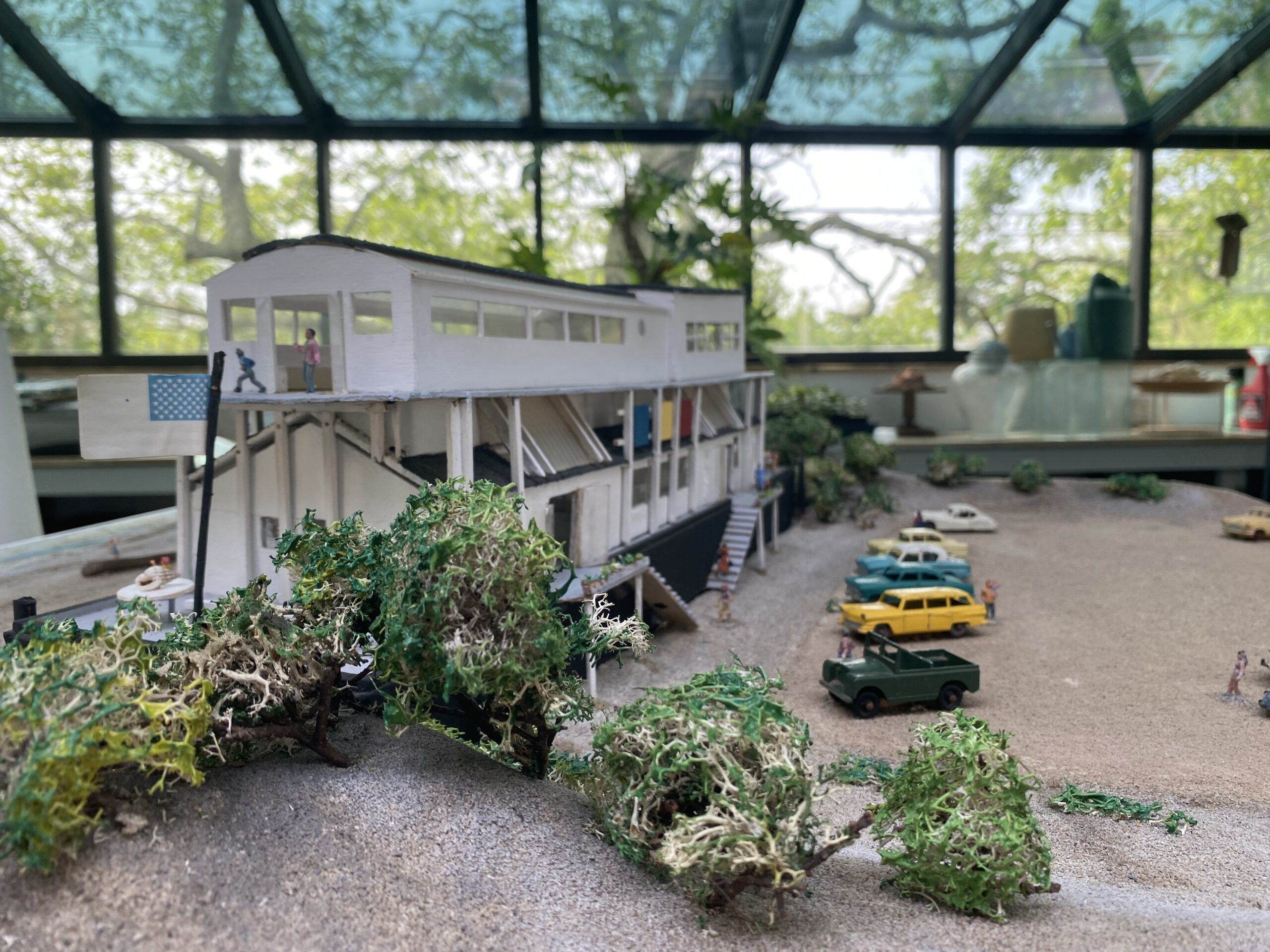
In 1940, Napeague’s Lazy Point was mostly home to fishermen and their families. It was an unlikely place for the summer home of two New York City-based art educators: he was the founding director of the Department of Education at the Museum of Modern Art (MoMA) and she was an artist-teacher. But Victor and Mabel D’Amico liked the composition of the views they got there: Hicks Island in the immediate foreground, water all around, and then Gardiner’s Island in the distance. They thought oceanfront views were too monotonous — all that sky and ocean — and were looking for something more modern than a traditional house in a nearby village. So, they settled on Lazy Point and built one of the first modern houses in the area — by hand.
The D’Amicos weren’t exactly builders, but they were quick learners who were soon pouring concrete by hand and bringing their creativity to construction. When the war broke out, building materials were hard to come by, so they bought a house up-island to take it apart. One of Mabel’s tasks was to straighten out the nails: those too were rationed. They put in their own plumbing and over a few summers put together a modern, functional house from the ground up. During construction, they’d put up a tarp and pseudo-camp on the site.
Now, the Mabel & Victor D'Amico Studio & Archive, which is a member of the National Trust for Historic Preservation’s Historic Artists’ Homes and Studios program, is chock-a-block full of Mabel’s found-object constructions, from driftwood sculptures to rings to bird mosaics made of glass. The couple’s creativity is present in each room of the house, which is highly modern and built for function without losing beauty. One room stores archival materials, and the home is preserved essentially as Mabel left it.
Mabel and Victor D’Amico were committed to the value of art education, especially for children. Besides the preservation of the D'Amico's legacy, today the mandate of their former home is teaching.
Victor D’Amico worked at MoMA from the 1930s to the late ‘60s, creating programming for adults and young people. He favored an experiential approach: when Cubist art was still novel, instead of lecturing at people to explain it, he’d bring them into a studio to make a Picasso of their own. Although his projects at the museum were extensive, the best-known is perhaps the Children’s Art Carnival, founded in 1942. It was about motivating children to make art, away from their parents' watchful gaze. Experimentation, exploration and process rather than formal or rote technique were emphasized.
For Victor, “Art education is dedicated to the development of the nobler qualities of people — to learn to build, to oppose destruction and prejudice,” he said, in 1963. “Creativity and the development of creative faculties is an investment in the future.”
Mabel spent over five decades teaching art and in her own work explored countless mediums and approaches. In her second-floor studio of the couple’s Napeague home, she transformed everyday objects, both man-made and natural, into new creations. She was heavily influenced by the surrounding landscape, drawing inspiration from the beach and her studio views. Sometimes she outsourced — Mabel would leave hair from her brush outside for birds to fashion into nests and then collect what they had made. She brought the same spirit of creativity to her teaching, finding new ways to get her high school students excited about art and expression.
In 1960, to bring their approach to art education to a permanent place on the East End, the Art Barge was created. The D’Amicos sourced a WWII Navy barge which was anchored nearby alongside Napeague Harbor and a second story was added to the structure. Various art classes for children and adults have been held there ever since, continuing the legacy of the D’Amico’s commitment to art education.
On Saturday, June 25, the D’Amico Studio & Archive, along with three other local homes and studios that are members of the National Trust for Historic Preservation’s Historic Artists’ Homes & Studios program, will be open to the public for the East End Open House, from 11 a.m. to 3 p.m. There are no reservations required and admission is free. The Mabel & Victor D’Amico Studio and Archive is at 128 Shore Road in Amagansett also offers guided tours, by appointment. Call 631-267-3172. or visit damico-art.org for details. Also participating in the tour are the Madoo Conservancy (madoo.org) in Sagaponack, the Moran Studio (easthamptonhistory.org) in East Hampton Village, and the Pollock-Krasner House (stonybrook.edu/pkhouse) in Springs.